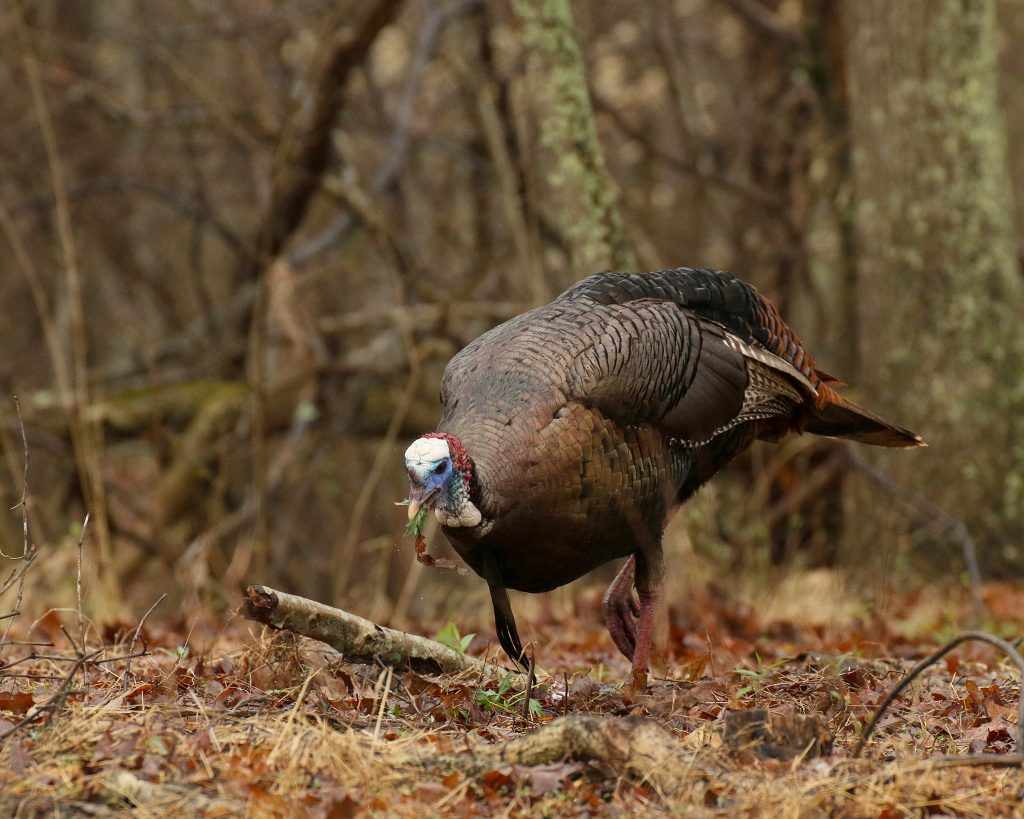The Importance of Insects to Wild Turkeys
The wild turkey is known for its adaptability and complex social behaviors. However, its survival, particularly in the early stages of life, depends on various environmental factors. Among these, the availability of insects (bugs) plays a critical role in the survival and development of wild turkey poults.
Insects: A Vital Nutritional Resource
Insects are critical to all life stages of wild turkeys, but insects provide an essential source of protein and nutrients crucial for the growth and development of turkey poults. During the first few weeks of life, poults experience rapid growth, and their energy and protein needs are exceptionally high. Insects, rich in proteins, amino acids and other vital nutrients, are the perfect food source to meet these demands.
Key insect groups consumed by poults include:
- Grasshoppers: Rich in protein and easy to catch, grasshoppers are a staple food for young turkeys.
- Beetles: A high-protein option often found in leaf litter or on plants.
- Spiders and Ants: Though small, they are abundant and accessible.
- Caterpillars and Moths: Soft-bodied insects that are easy for poults to digest.
These insects provide the necessary nutrients and energy to support the poults’ active foraging and predator evasion behaviors.
Foraging Behavior and Habitat

Wild turkey poults are best described as precocial when they are hatched. Precocial is a development pattern for young birds that are hatched with feathers and open eyes and can move soon after they are hatched. Poults receive little parental care and can feed themselves but must follow the mother to find food, water and shelter. Poults are led to areas rich in insects, such as fields, meadows and forest edges. These habitats are typically characterized by abundant herbaceous plants and low vegetation, which attract a variety of insect species.
The presence of insects is directly linked to habitat quality. Land management practices, such as controlled burns, selective logging and open fields, can enhance insect abundance by promoting plant diversity and maintaining healthy ecosystems.
Survival and Growth Rates
The availability of insects during the first few weeks of a poult’s life is often the difference between survival and mortality. When hatched, a turkey poult weighs less than 2 ounces and, with access to abundant insects, grows quickly (adds nearly 2 pounds per month), develops stronger muscles for flight, and can better evade predators as they mature. Poults that lack enough insect intake are more likely to suffer from malnutrition, stunted growth and predator vulnerability.
Ecosystem Interdependence
The relationship between turkey poults and insects is an excellent example of ecosystem interdependence. Healthy insect populations benefit wild turkeys and contribute to pollination, soil health and the broader food web. Therefore, efforts to conserve turkey populations must include strategies to protect and enhance insect habitats.
Conservation Implications
Modern agricultural practices, pesticide use and habitat loss have negatively impacted insect populations in many areas. As a result, wild turkey populations may face challenges in areas where insect abundance has declined. Conservationists and land managers must prioritize the following:
- Reducing pesticide use to protect insect biodiversity.
- Implementing land management practices that support diverse plant and insect communities.
- Monitoring turkey poult survival rates to assess habitat health.
Conclusion
Insects are indispensable to the survival and development of wild turkey poults. As a critical food source, they provide the protein and energy necessary for poults to thrive in their early weeks. Maintaining healthy insect populations is essential for wild turkeys and the broader ecosystems they inhabit. Through thoughtful conservation and habitat management, we can ensure that insects and wild turkeys continue flourishing in the wild.
